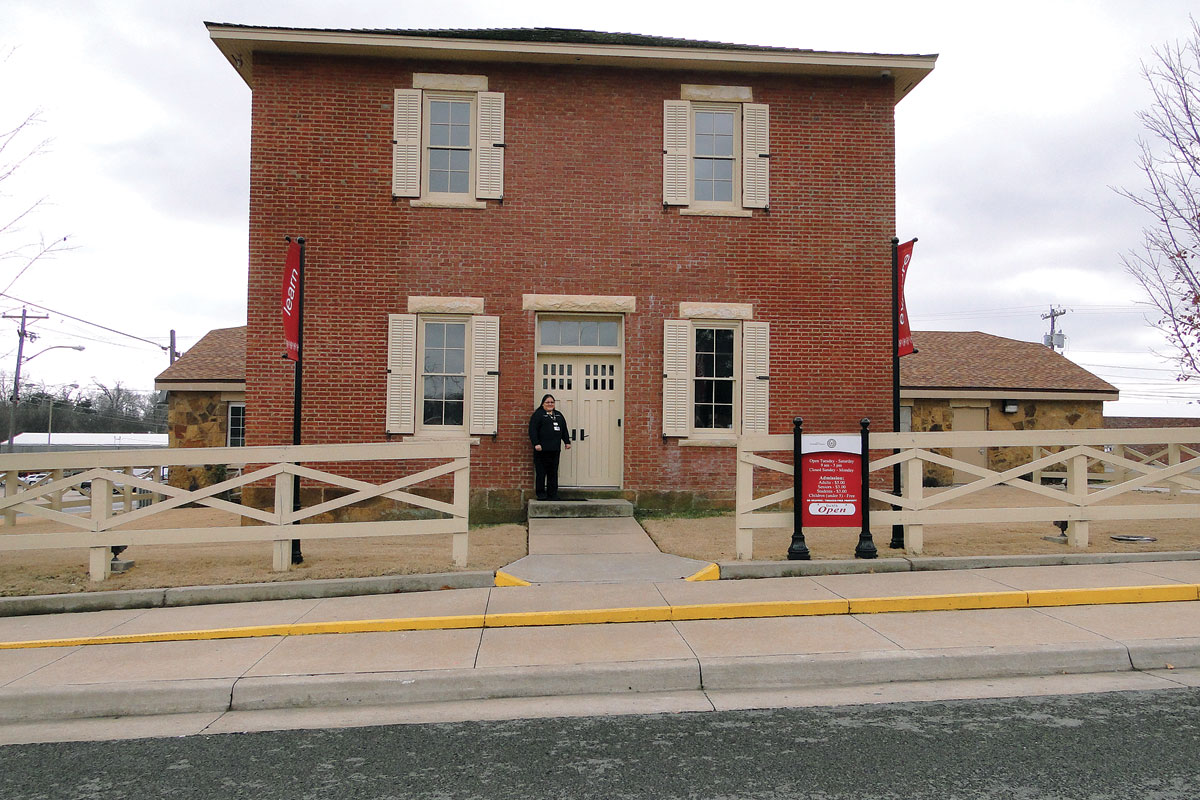
The Cherokee National Supreme Court Museum tells how the tribe influenced the nation’s history
The Cherokee National Supreme Court Museum in Tahlequah, Okla., provides an interesting and easily experienced introduction to the critically important evolution of the Cherokee Nation’s legal system.
Part of what makes this museum so inviting is the interactive nature of many displays, something especially appealing to young people.
The first American colonists arrived in 1607, seeking both religious and political freedom from highly-restrictive societies based on the feudal systems prevalent at the time and, later, on shouting matches still prevalent in English Parliament. Though the Europeans arrived with their own understanding of what a constitutional government was, a Confederacy of Iroquois Nations had “The Great Law of Peace,” a 400-year-old constitution written on wampum belts, intended to retain and uphold peace. This constitution was acknowledged by a 1988 congressional resolution as an influence on the development of the United States Constitution.
The new European settlers knew they wanted more freedom but had little or no experience with devising a procedural system based on agreement rather than top down power. The Founding Fathers didn’t have far to look.
The Native American tribal rules of conduct when discussing governmental business provided a useful example. Each representative spoke while everyone else listened. Thomas Jefferson, one of the most influential of the Founding Fathers, supported this more civilized procedural system. He also believed in the sovereignty of Native Americans, which was subsequently included in and protected by the Constitution.
When Europeans arrived with new legal concepts and ways of life, the Cherokee saw they needed to adapt not only to survive but also to preserve their identity, sovereignty and culture. A testament to their success is that, in spite of numerous obstacles, they are the largest Native American tribe in the United States today.
The history of the Cherokee legal system provides insight into the evolution of retaining sovereignty with in the United States federal government. Originally, the Cherokee followed the ancient practice of Blood Law or Clan Law, as it is sometimes called. Offenses or imbalances were considered clan issues committed by the clan collectively. The Cherokee began moving toward a rehabilitation approach in 1875 when confinement was the preferred punishment under the U.S. system. Rehabilitation included trade activities such as blacksmithing, gardening and maintaining public works.
In 1827, the Cherokee adopted their first Constitution, which was characterized by three branches of government (executive, legislative and judicial) governed by a principal chief. Before long, however, land pressure became intense as more Europeans wanted Native American land. Beginning early in the 1800s, the U.S. government policy was one of assimilation but the situation worsened as the desire for Native American land increased. The Supreme Court case Worchester v. Georgia establish that a Georgia statute requiring a license for Native Americans to be on Native American land was unconstitutional.
President Andrew Jackson, who feared military conflict between federal troops and a Georgia militia, supported Georgia’s desire for Cherokee land. In 1930, Congress passed the Indian Removal Act which forced the Cherokee to move west of the Mississippi to Indian Territory, now Oklahoma, on the infamous Trail of Tears.
New problems emerged after the removal. One issue was determining tribal v. US court jurisdiction when a non-Cherokee committed a crime in Cherokee territory further complicated legal matters. The results were severe diminishment of tribal land with an influx of outside settlers coming to the area and with criminal activity simply being ignored. An additional issue occurred when children, forced from their homes to attend federal schools, were barred from speaking their native languages. The damage this era had on Native American society had rippling effects for generations to come.
In 1954, after 50 years, the Indian Reorganization Act finally changed federal policy and began the process of strengthening tribal self-government. This act was followed by others over the next 25 years. In addition, the Cherokee Constitution was revised three more times, the last in 2006.
Today, the tribal government has the same three branches of government, in addition to other regulatory and support arms, such as emergency management, the marshals law enforcement services and procurement.
While the external structure of the Cherokee Constitution is similar to that of the United States, its intent is to protect and promote the uniqueness of the Cherokee society.”
The Cherokee National Supreme Court Museum, the oldest government building in Oklahoma, is housed in the original courthouse building constructed in 1844 by James S. Pierce. Both the Supreme and District Courts held sessions in this building for a number of years before a new Capitol building was built in 1869 after the Civil War to house all three branches of the Cherokee government in one location. The original courthouse then became the location of the Cherokee Advocate, the first newspaper in Oklahoma.
“The Cherokee National Supreme Court Museum stands as a testament to the Cherokee people who were able to persevere from hardship and rebuild their legal system in Indian Territory,” director of Cherokee Nation Cultural Tourism,” said Travis Owens.
Today the Cherokee National Supreme Court Museum is made up of three sections: the judicial system, Cherokee journalism (including an impressive printing press) and an introduction into the evolution of the Cherokee language, including the written form created by Sequoyah in 1821. All three areas are supported by stories, historical photos, objects and furniture.






